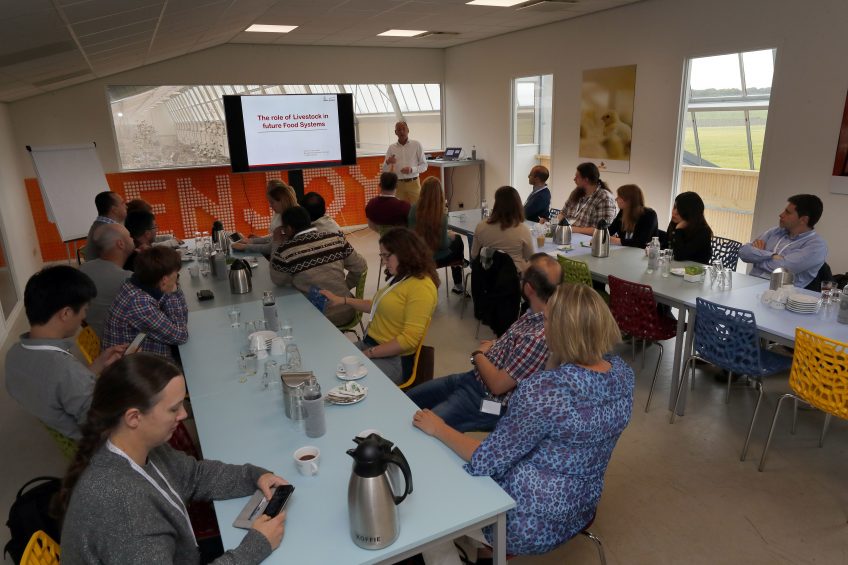Interaction between nutritionists and veterinarians

Composing good quality feed is an art in itself, however making the best feed possible can only be done with knowledge of the bird itself. That is why Schothorst Feed Research focused on the interaction between nutritionists and veterinarians in its latest International Feeds & Nutrition Course.
Knowledge of the development of the birds’ intestines and microflora is essential to understand what certain feed materials and compositions do in promoting optimal digestion and growth. But this knowledge isn’t necessarily top of mind for nutritionists per se. That said, many experts involved in the field of nutrition are eager to learn more. That is why Schothorst Feed Research, based in the Netherlands, added an extra module to their existing yearly training programme. In the module ‘Intestinal Health Poultry’ nutritionist got the latest insights in the workings of the gut, explained by veterinarians and the Dutch animal health service. Besides the theory the course had a practical component with necropsy and morphology.
The training is developed to encourage the exchange of knowledge about intestinal health between nutritionists and veterinarians. The main learning objectives are to obtain in depth knowledge about the intestines of poultry, to obtain knowledge about the interaction between nutrition and intestinal health and to share responsibility for intestinal health between the nutritionist and the veterinarian. Trainer and senior nutritionist Ellen van Eerden on the topic: ‘’Both veterinarians and nutritionists are experts in their own field, but only in combining the knowledge of both can we optimise the feed to the birds’ needs.”
As early as possible
The intestinal tract of chickens has many complex mechanisms, which can be positively influenced directly after hatch. In the transition from the embryo to the chicken the development of enzyme activity and the establishment of the intestinal microbiota should be attended to as early as possible. The so-called hatch window, the time interval in which a group of fertilised eggs hatch, can extend between 36 to 48 hours. In this time-frame chicks traditionally use the residual yolk to thrive. That said, new technologies like early feeding in the hatcher, can improve early and later gut quality.
With feed available in the hatcher, chicks have a better start as the intestinal tract matures faster and at the same time, the valuable nutrients in the residual yolk can be used by the bird for the development of immunity. A study of the Dutch animal health service showed that a 36 hour delayed access to feed lead to delayed intestinal development of all parts of the intestinal tract in hatchlings. This lead to developmental arrest of villus surface, limited increase in the number of cells in crypts and villi and limited capacity for digestion and absorption i.e, growth retardation.
Follow through
With a good start it is essential to follow through in optimal nutrition. The intestinal tract of fast growing birds encounters many challenges during its life, that can be prevented, partially with good nutrition. Wet litter, bad feathering and abnormal faecal and caecal droppings can be signs of disease or malnutrition. With a good necropsy the causes can be further determined. In any case feed composition with the right amino acid profiles, crude protein levels, particle size and viscosity needs constant focus and tuning to the needs of the bird during its life cycle.








